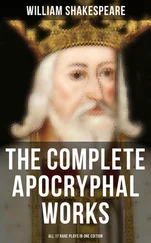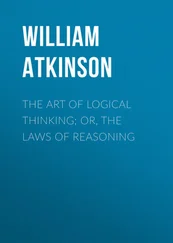Learn to recognize the pressure of the “Unseen Hand”— welcome it when it comes, and bid it welcome. Do not shake it from your shoulder as an alien thing, simply because you fail to understand it and its laws. Trust to its well-meaning and kindliness. It is not an outside thing—it is a part of your very self. It will manifest according to your faith in and expectation its presence. It is striving to unfold further and further into your conscious life, and you may aid it by bidding it welcome and treating it as a part of yourself instead of as an alien. It is Yourself who is speaking—so do not shut the door of your mind to it.
Let the Light Within you send its rays into your outer consciousness, that it may illumine and make plain the way that your feet must tread. And step out boldly upon the place illumined for your footsteps without fear and with confidence. If you understand these things clearly you will know what good old Newman meant when he wrote the beautiful lines:
“Lead, kindly Light, amid the encircling gloom,
Lead thou me on.
The night is dark, and I am far from home;
Lead thou me on.
Keep thou my feet; I do not ask to see
The distant scene; one step enough for me;
Lead thou me on.”
The Law of the New Thought: A Study of Fundamental Principles & Their Application
Table of Content
Chapter I. "What is the 'New Thought'?"
Chapter II. "Thoughts are Things."
Chapter III. The Law of Attraction.
Chapter IV. Mind Building.
Chapter V. The Dweller of the Threshold.
Chapter VI. Mind and Body.
Chapter VII. The Mind and Its Planes.
Chapter VIII. The Sub-conscious Plane.
Chapter IX. The Super-conscious Faculties.
Chapter X. The Soul's Question.
Chapter XI. The Absolute.
Chapter XII. The Oneness of All.
Chapter XIII. The Immortality of the Soul.
Chapter XIV. The Unfoldment.
Chapter XV. The Growth of Consciousness.
Chapter XVI. The Soul's Awakening.
Chapter I.
“What is the ‘New Thought’?”
Table of Content
The question—Difficult to answer—The New Thought is the oldest thought—Known to the few in all ages—Found at the heart of all religions and philosophies—In the songs of the poets and the writings of the mystics—The flame kept alive through the long ages—Hard sayings and dark corners made clear—The first glimmer of recognition—A great wave of psychic thought now passing over the world—What the New Thought stands for—No creeds or dogmas— Individualism—The Supreme Power—Spiritual unfoldment—God’s love and presence—All is One—What the idea of Oneness means—Man immortal—Assurance of immortality from the awakened spiritual consciousness—Theories not fundamental—Spiritual unfoldment— Thoughts are things—The attractive power of thought—Mind is positive to the body—Latent forces to be developed.
HOW OFTEN we hear this question: “What is the ‘New Thought’?” And how difficult it is to answer such a question. The subject is so large, and the New Thought man or woman has grown into its truths so gradually that he or she finds it almost impossible to explain in a few words just what is meant by the term “New Thought.” This is rendered particularly difficult by the fact that there are no creeds in the “New Thought”. There are many cults and schools claiming allegiance to The New Thought, who differ very materially from each other in doctrine and details, but there are certain underlying principles to which all give adherence, though stating these principles in different ways, and using apparently contradictory terms. To answer the question which forms the title of this chapter, is no easy task, but let us see what we can do with it.
In the first place, The New Thought is the oldest thought in existence. It has been cherished by the chosen few in all ages, the masses of the people not having been ready for its teachings. It has been called by all names—has appeared in all guises. Every religion has within it certain esoteric teachings, not grasped by the many, but understood by the few, which hidden teachings contain much that is now being taught as The New Thought. The New Thought contains certain hints at mighty truths which have nestled in the bosom of the esoteric teachings of all religions—in the philosophies of the past and present—in the temples of the Orient—in the schools of ancient Greece. It is to be found in the songs of the poets—in the writings of the mystics. The advanced science of this age touches it without recognizing it fully.
It is not a thing that can well be conveyed by words—it is not easily comprehended by purely intellectual processes—it must be felt and lived out by those who are ready for it—those for whom the time has come. It has been known to the few throughout all ages and climes. All races have known it. It has been handed down from teacher to pupil from the earliest days. It contains the Truth to which Edward Carpenter refers, when he sings:
“O, let not the flame die out! Cherished age after age in its dark caverns, in its holy temples cherished. Fed by pure ministers of love— let not the flame die out.”
The flame has been tenderly cared for down the ages. Many lamps have been lighted at the shrine, and have carried away with them a tiny bit of the sacred fire. The few in all ages have kept the flame alight by adding the oil of the spirit—that which comes from the inmost recesses of the soul. To protect this flame many have suffered death—persecution—contumely— revilement—disgrace. Some have been compelled to assume an air of mystery and charlatanism in order to distract the attention of the masses, and thus keep sheltered this bit of sacred flame. Ancient writers have carefully placed bits of this esoteric truth among writings of wide circulation, knowing that only those with the key could read, and the multitude would not even suspect the existence of the grain of wheat among the chaff. The advanced New Thought man of today may pick up the writings of all ages, and will see deep truths therein set forth in language perfectly clear to him, but which means nothing but words to the ordinary reader. The sacred books of all religions may be read by one who has the key, and the Greek philosophers, from Plato down, take on another meaning when one understands the principles underlying the esoteric teachings. And the modern writers also may be read with new insight, when one has grown into touch with the underlying principles. Shakespeare, Bacon, Pope, Browning, Emerson, Whitman and Carpenter, have many dark corners and hard sayings which are illuminated and made plain when one has obtained possession of the central thought—the Oneness of All.
Down, down through the ages has this Truth come to us, but it seems reserved for this age to have it spread broadcast among the people. And yet to many the message does not appeal. Some grasp a few scattering truths and think that they have it, but fail to see the real underlying principle of Oneness. Others reject it entirely, not being ready for it. Others who are ready for it, seem to grasp it instinctively as if they had always known it—they recognize their own, which has come to them.
The mere calling of the attention of some to the truth, seems to awaken the first glimmer of recognition in them; others find it necessary to reflect upon the idea and awaken to a recognition of the Truth more slowly. To others, the time is not yet ripe for the recognition of the great Truth, but the seed is planted and the plant and blossom will appear in time. That which seems like the veriest nonsense to them now, will be brought home to them as the very truth when the time comes. A desire has been created that will cause a mental unrest until more light is received. As old Walt Whitman has said: “My words will itch in your ears till you understand them.” And as the great American transcendentalist, Emerson, says : “You cannot escape from your good.” These people who do not yet understand will carry the thought with them, which, like the lotus, will unfold naturally and gradually. The Truth once recognized cannot be lost. There is no standing still in Nature.
Читать дальше












